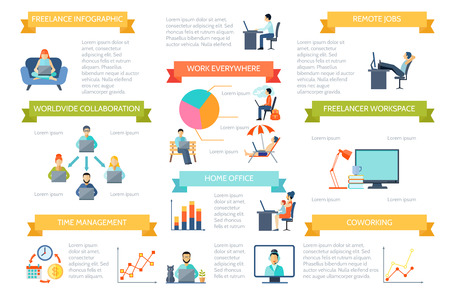Introduction to 360-Degree Feedback
360-degree feedback has become a cornerstone in performance management and leadership development for US organizations. At its core, this process involves collecting confidential, anonymous feedback from an employee’s direct reports, peers, supervisors, and sometimes even customers. The goal is to create a holistic view of an individual’s strengths and areas for growth. Unlike traditional top-down reviews, 360-degree feedback incorporates multiple perspectives, providing a richer context for self-reflection and professional development. In the United States, companies leverage this approach to foster open communication, support continuous learning, and drive accountability within their teams. With its focus on transparency and well-rounded evaluation, 360-degree feedback is especially valued in workplaces that prioritize autonomy, teamwork, and a culture of ongoing improvement.
2. Key Advantages of 360-Degree Feedback
Implementing a 360-degree feedback system can bring transformative benefits to US organizations, especially those focused on employee growth and agile team dynamics. This multi-source feedback method goes beyond traditional top-down reviews, enabling employees to receive input from peers, direct reports, supervisors, and even external stakeholders. Below are some of the most compelling advantages:
Increased Self-Awareness
One of the primary benefits is the boost in self-awareness among employees. When individuals receive constructive feedback from multiple sources, they gain a broader perspective on their strengths and areas for improvement. This comprehensive insight often leads to more accurate self-assessment, empowering people to set meaningful goals and take ownership of their professional development.
Enhanced Team Collaboration
360-degree feedback fosters a culture of open communication and trust within teams. By encouraging candid input from colleagues at all levels, it breaks down silos and helps team members better understand each others working styles and contributions. This mutual awareness promotes empathy, reduces misunderstandings, and aligns everyone toward shared objectives—a key component in high-performing American workplaces that value collaboration and innovation.
Holistic Performance Insights
Traditional performance reviews can be limited by manager bias or incomplete information. In contrast, 360-degree feedback offers a more holistic view of an employee’s impact across various dimensions. Organizations benefit from richer data, which supports more informed talent decisions, targeted training programs, and fairer evaluations.
Summary Table: Major Benefits of 360-Degree Feedback
| Benefit | Description |
|---|---|
| Self-Awareness | Employees receive diverse perspectives on their strengths and opportunities for growth. |
| Team Collaboration | Cultivates trust, empathy, and alignment among team members through open dialogue. |
| Holistic Insights | Provides a well-rounded picture of performance by incorporating feedback from multiple sources. |
The Bottom Line for US Organizations
For American companies striving for adaptability and continuous improvement, leveraging 360-degree feedback not only enhances individual accountability but also elevates overall organizational effectiveness. It’s a strategic tool that aligns with the modern workplace ethos—valuing transparency, teamwork, and personal growth.

3. Potential Drawbacks and Challenges
While 360-degree feedback can be a powerful tool for growth and organizational improvement, it’s important for US-based organizations to recognize the potential downsides and challenges that come with its implementation. One of the most significant concerns is bias. Feedback collected from peers, subordinates, and even managers can be influenced by personal relationships, office politics, or unconscious prejudices. This can lead to skewed results that don’t accurately reflect an employee’s performance or potential.
Another challenge revolves around confidentiality. In American workplaces, trust is foundational for open communication and honest feedback. If participants feel their comments might be traced back to them, they may hesitate to provide candid insights—or worse, opt out of the process entirely. Ensuring true anonymity in smaller teams or tight-knit departments can be particularly tricky, potentially undermining the value of the feedback itself.
Misuse or misunderstanding of feedback is also a real risk. Without proper training or context, recipients might focus on negative comments rather than constructive criticism, damaging morale and engagement. On the other hand, managers could misuse the data as a tool for punitive actions rather than development, which contradicts the intended purpose of fostering growth and collaboration.
Finally, there’s the danger of feedback overload. When employees are inundated with input from multiple sources without clear guidance or support on how to act on it, the process can feel overwhelming instead of empowering. To avoid these pitfalls, it’s essential for US organizations to design their 360-degree feedback systems thoughtfully—with clear guidelines, robust confidentiality protocols, and ongoing support—so the benefits truly outweigh the drawbacks.
4. Best Practices for Implementation in US Organizations
Implementing 360-degree feedback effectively in US organizations requires a thoughtful approach that respects American workplace norms such as transparency, fairness, and a focus on individual growth. Below are practical guidelines to ensure success and acceptance among employees:
Establish Clear Objectives
Begin by defining the purpose of the 360-degree feedback process. Is it for development, performance appraisal, or succession planning? Clearly communicating these objectives helps align expectations across the organization.
Ensure Confidentiality and Anonymity
In US workplaces, employees value privacy and psychological safety. Guaranteeing anonymity of responses encourages honest, constructive feedback without fear of retaliation. Ensure that only aggregated results are shared with recipients.
Select Participants Strategically
Choose reviewers who interact frequently with the subject, such as peers, direct reports, supervisors, and sometimes external stakeholders. This selection should be perceived as fair and unbiased to avoid any sense of favoritism or exclusion.
Recommended Rater Groups
| Rater Group | Role in Feedback Process |
|---|---|
| Manager/Supervisor | Provides strategic perspective and performance expectations |
| Peers/Colleagues | Offers insight into teamwork and collaboration skills |
| Direct Reports | Sheds light on leadership and management style |
| Self-Assessment | Enables reflection and self-awareness |
| Clients/External Partners (optional) | Adds customer-facing perspectives (if relevant) |
Communicate Transparently and Gain Buy-In
Share details about the process, timelines, and intended outcomes with all participants. Address concerns proactively through FAQs, training sessions, or town halls to reduce anxiety or skepticism. Gaining leadership support is also critical for modeling openness to feedback.
Offer Training and Support Resources
Equip both raters and recipients with guidelines on giving and receiving feedback constructively. In US culture, directness should be balanced with respect—emphasize actionable suggestions over criticism.
Sample Training Topics
- The principles of effective feedback (specific, timely, respectful)
- Cultural awareness in diverse teams
- How to interpret 360-degree feedback reports objectively
- Tactics for creating personal development plans based on insights received
Integrate Feedback Into Development Plans
Avoid using 360-degree feedback solely for evaluation or compensation decisions. Instead, integrate it into ongoing development conversations and goal-setting sessions. Encourage managers to help employees create action plans that leverage strengths and address areas for improvement.
Summary Table: Best Practices Checklist
| Best Practice | Description/Action Step |
|---|---|
| Define Clear Purpose | Align process with organizational goals (development vs appraisal) |
| Anonymity & Confidentiality | Protect rater identities; share only aggregate data |
| Diverse Rater Selection | Select a balanced group familiar with the recipient’s work |
| Transparent Communication | Inform all stakeholders about process details upfront |
| Training & Guidance Provided | Prepare participants to give/receive feedback effectively and respectfully |
| Tie Feedback to Growth Initiatives | Create follow-up plans focused on development—not just evaluation |
By following these best practices tailored to US workplace values—such as autonomy, fairness, transparency, and continuous improvement—organizations can maximize the benefits of 360-degree feedback while minimizing resistance or unintended negative consequences.
5. Legal and Ethical Considerations
When implementing 360-degree feedback in the United States, organizations need to pay careful attention to both legal requirements and ethical standards. The process involves collecting sensitive information from multiple sources, which means that mishandling data or misusing results can lead to serious consequences. Below are key guidelines and considerations specific to the US context:
Compliance with Employment Laws
360-degree feedback programs must comply with federal and state employment laws such as Title VII of the Civil Rights Act, the Americans with Disabilities Act (ADA), and the Equal Employment Opportunity (EEO) regulations. These laws prohibit discrimination based on race, gender, age, disability, or other protected categories. When designing surveys and analyzing results, ensure questions are neutral and do not indirectly solicit discriminatory responses. Documentation should be retained carefully in case of audits or legal reviews.
Confidentiality and Data Privacy
Respecting employee privacy is paramount. Feedback should be collected and stored securely, with access limited to authorized personnel only. Organizations should communicate clearly about who will see individual responses and how the data will be used. In the US, while there is no single comprehensive data privacy law like the GDPR in Europe, various state-level statutes (such as CCPA in California) may apply, especially when dealing with digital records. Anonymity should be protected wherever possible to foster honest input.
Transparency and Informed Consent
Employees must be informed about the purpose, scope, and use of 360-degree feedback before participation. This includes explaining how feedback might impact promotions, compensation, or development opportunities. Obtaining explicit consent ensures transparency and builds trust within the organization.
Avoiding Retaliation
The organization must establish policies that strictly prohibit retaliation against anyone who provides honest feedback—positive or negative. Encouraging a culture of psychological safety is essential so employees feel comfortable sharing constructive insights without fear of repercussions.
Best Practice: Regular Legal Review
Given that employment law evolves over time, it’s wise to consult with HR legal counsel regularly to review your 360-degree feedback process for compliance and fairness. This proactive approach helps mitigate risk while supporting an ethical workplace environment.
6. Maximizing Value: Integrating Feedback Into Organizational Culture
Successfully leveraging 360-degree feedback goes beyond simply collecting data—it’s about weaving insights into the fabric of your organization’s everyday practices. For US organizations, where autonomy, transparency, and continuous growth are highly valued, integrating feedback effectively can be a game-changer. Here are actionable strategies for maximizing value from 360-degree feedback and fostering a culture of ongoing improvement and personal development.
Encourage Open Dialogue
Create safe spaces for employees to discuss their feedback with managers, mentors, or peers. Open dialogue not only helps clarify misunderstandings but also empowers team members to own their growth journeys. Consider regular one-on-one meetings or peer-coaching sessions as part of your follow-up process.
Link Feedback to Development Plans
Feedback should translate into action. Encourage employees to set specific, measurable goals based on their 360 results. Make these goals visible within professional development plans and revisit them during performance check-ins. This approach demonstrates that feedback isn’t a one-time event but an ongoing commitment to growth.
Integrate Feedback Into Leadership Development
For US organizations aiming to build agile leaders, use 360-degree insights as a cornerstone of leadership training programs. Tailor coaching and workshops around common themes emerging from feedback data—such as communication skills, emotional intelligence, or cross-functional collaboration.
Celebrate Progress and Small Wins
Recognize not just big achievements but also incremental improvements made in response to feedback. Shout-outs during team meetings, internal newsletters, or digital badges can reinforce the idea that continuous improvement is valued and noticed.
Maintain Momentum With Regular Cycles
Embed 360-degree feedback cycles into your annual rhythm rather than treating them as isolated events. When employees see that reflection and growth are recurring priorities, it becomes easier for them to embrace self-improvement as part of your workplace DNA.
Lead By Example
Cultural change starts at the top. Encourage leaders and managers to share their own feedback experiences openly, demonstrating humility and a willingness to learn. This vulnerability signals that seeking input—and acting on it—is a strength, not a weakness.
By consistently integrating 360-degree feedback insights into daily routines, talent development efforts, and leadership conversations, US organizations can cultivate an environment where personal growth is celebrated and continuous improvement is second nature.


